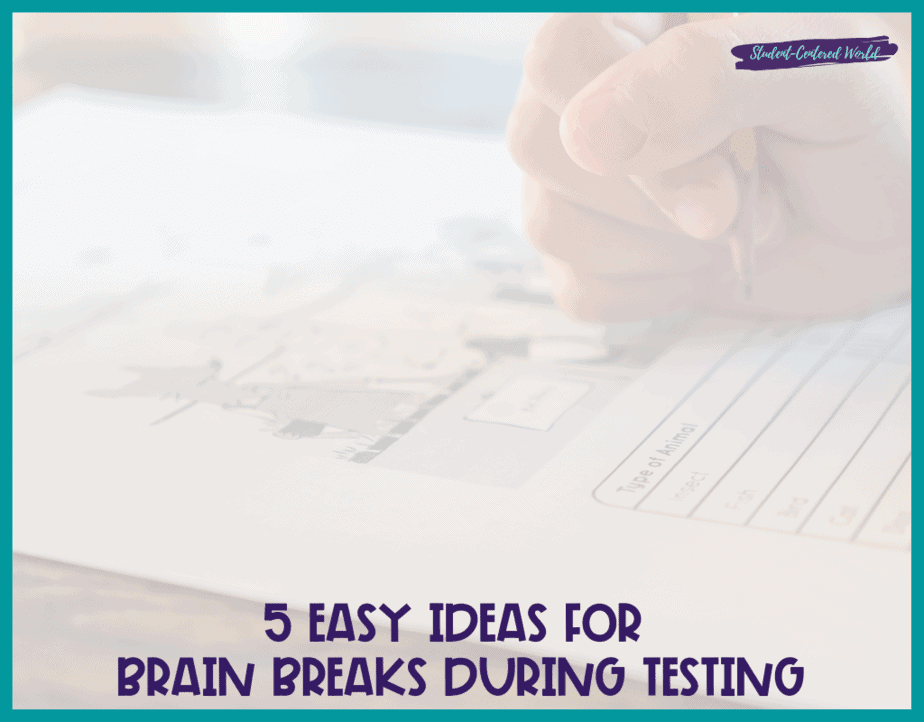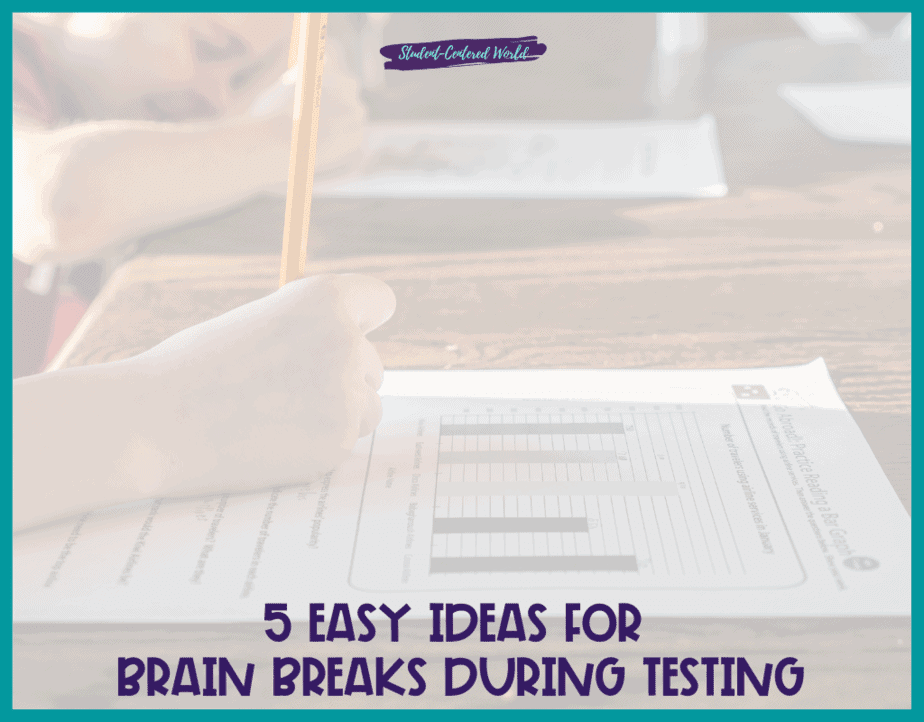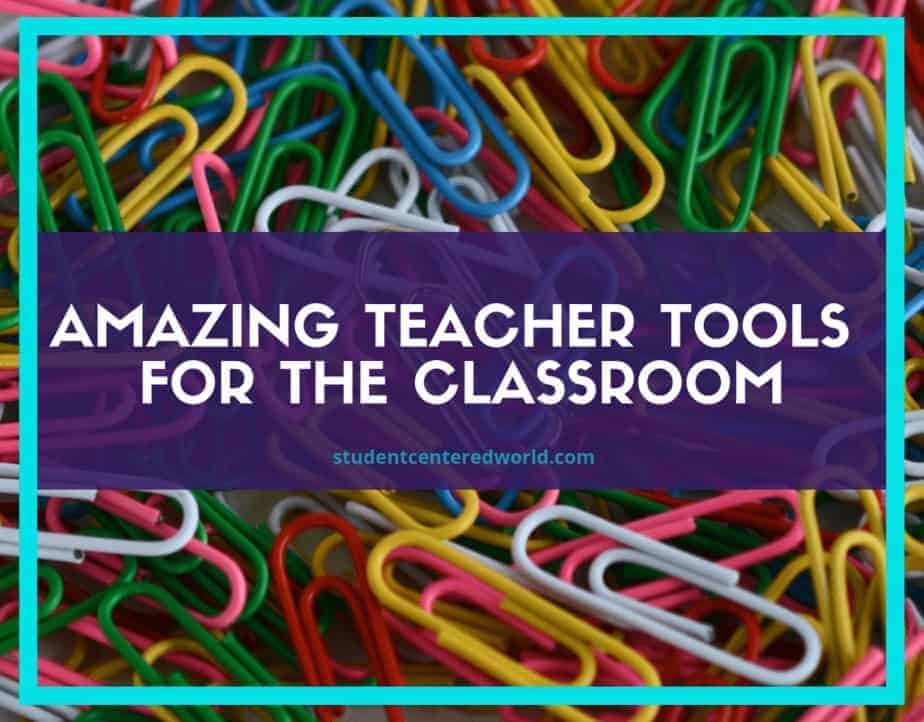5 Easy Ideas for Brain Breaks During Testing
Over the past few years, “testing” has become a bit of a dirty word in education. What used to be for placement or just checking to make sure students were hitting certain benchmarks has become an orchestrated production. Different states have different requirements, but the sheer volume of testing has increased greatly. With the focus on these tests being high, and the amount of pressure that is being put on our students (and us) surrounding them, it is more important than ever to be certain we are utilizing brain breaks during testing.
These tests can be extremely stressful for both student and teacher as many of them no longer are just to see where a student stands in their educational progress, but have real negative ramifications if the scores are not within a certain value.
While certain methods, like student-centered instruction, help overall with testing and student success, it is also really important to make sure that we are taking care of the mental health of our students while they are participating in these strenuous testing sessions.
Implementing brain breaks during testing can make all the difference in the world when it comes to stress levels and the achievement of our students.
During testing, students find themselves sitting for long periods of time, concentrating on words on a screen or on paper. Talking is not allowed and some of the timing of these tests could be upwards of an hour and a half of straight work. As unfortunate as this is, testing has become a part of our educational system and much like with other changes, we need to find a way to embrace the adversities and find ways to make sure that they are working in favor of our students as much as possible.
Besides preparation for these tests, there are some great break breaks during testing that can take place to help students stay refreshed and focused throughout their testing experience.

(This post may contain affiliate links that won’t change your price but will share some commission. As an Amazon Associate, I earn from qualifying purchases. Please read our disclosure policy for more information.)
How to Implement Brain Breaks During Testing
Well obviously students cannot take brain breaks during testing, The time before the activity begins and when small breaks are given can be utilized to help our students as a normal brain break called by the teacher would be.
The first recommendation is to make sure that the students have a little bit of activity before testing begins at all. This may be one collective brain break such as Simon Says or a stretching activity. It is important to try to have all students on the same page a physical activity to set a bar where they will all be starting their examination.
If possible, make sure that the students also had something to eat prior to beginning testing. This isn’t necessarily a brain break per se, but it’s vital to help their focus. Try to remind students to eat before they come to school or give them the opportunity to eat before the testing begins.
Many schools have breakfast provided, but even having a small batch of granola bars, bananas, or bagels available…something quick…might make all the difference in the world when it comes to a student being able to focus on the test.
If possible, another great idea is to coordinate a walk with all students who are going to be testing before school begins. It could be led by the principal, the school mascot, or whatever will pump up the children about to test.
Depending on the time of year, a great option is to walk around the outside of your school once to get some fresh air or even to take a few laps around the gymnasium. it also helps develop a sense of community and is a great way to have a pseudo pep rally preparing these children for the tests that they will be taking.
Generally, in the testing proctor script, it does give a short break in between segments for a stretch that includes no talking. This is a great place to implement a brain break such as yoga, or something where it silently the students can follow the lead of a teacher.
Again you want to make sure that the brain breaks during testing allow the oxygen to flow to the brain and the blood to pump as well. This can be in absolute silence, but I would suggest practicing with your students before the actual day of the test just so they understand what they are doing. The last thing you want is trying to keep things silent and students feeling the need to ask questions because they are not sure what it is that they’re doing..or even worse, staying silent but getting frustrated because they don’t understand what they’re supposed to be doing even though the activity is supposed to be helping them stay calm and focused.
Something else that could help particularly fidgety students is giving them something that they can manipulate in their hands or their feet while they are searching for brain breaks during testing. This can be as simple as giving them a small Koosh ball (ad) to roll between their fingers as they are reading and answering their questions, or using fidget bands (ad) on their chair to give them something to pump with their feet. (ad)
These may not specifically be brain breaks during testing, but it does give them an avenue to help focus when their brain is having trouble doing so.
While we know testing is stressful for students, teachers, and administration alike, there are certainly ways to make the best of the situation and keeping the energy high and the focus strong with our test takers.
This is especially important if students are used to having options like flexible seating or regular brain breaks in the classroom. Generally, testing is an environment that they are not used to. it is important for us to try to make the environment as welcoming and familiar as possible for these students. If we show that we are stressed and concerned, that will trickle right down to them.
However, if we are positive in nature, showing a sense of calm and confidence, and are trying to keep things as normal as possible (like doing something on your brain breaks during testing), it will be less stressful for everybody involved and our students will perform better on their tests.
High-stakes testing may or may not be going away, but we can do what we can to adapt to the system that our students are a part of and will remember for the rest of their lives by implementing worthwhile brain breaks during testing that will help them through it.
Ideas for Brain Breaks During Testing
Usually, teachers are so focused on the actual test portion that it is hard to come up with ideas for brain breaks during testing that don’t come across as either disruptive or taking entirely too much time. Both are valid concerns if we’re being honest.
However, here are 5 easy ideas for brain breaks during testing that you can implement to help your students (and you) make it through these stressful, mentally draining times (and are certainly things you can use surrounding regular classroom tests, too).

1. Five Second Rule
I’ve seen versions of the “five-second rule” all over Pinterest. What’s great about this activity is that you can tailor it for any age or content area, especially for brain breaks during testing.
What you do is walk around the room with your pile of “brain food” (I used my kid’s Play-Doh – it was perfect for this particular activity). When you reach a student, they put their hand up and call out two-letter words. For each word they say that is correct, you deposit one playdoh ball into their bucket. If they say a word that is not on the list, you don’t give them any playdoh balls.
This activity serves two purposes – it keeps students engaged and focused for 15 seconds while you move to the next student (and they get “playdoh” in their bucket!) while also reinforcing vocab words without them even realizing what they are doing.
2. Jelly Bean Counting
Another easy activity that serves dual purposes is counting jelly beans. I have students count out the jelly beans in their jar, tally them on a piece of paper or dry erase board and then write that number as part of our class data. At the end of the week, we see which class has the most and which class has the least and we talk about why that might be.
3. Make a Mosaic
Have students work with small partners or groups to create a picture, pattern, design, or whatever it is they choose using M&Ms (or other small candy-coated chocolate treats). This activity serves several purposes. First, it gets students up and moving around the room to work collaboratively with another student. Second, their design might help guide other students through the test if they glance over at what your class is working on during a brain break. You can also use this activity as an early finisher or rainy day activity once the testing season is done.
4. Roll a Die
Students roll a die, write the number on their paper, and say an adjective that begins with the letter of the number they rolled. This activity is supposed to take 30 seconds but, in my experience, students can stretch this out for several minutes. However long it takes them though, it keeps students focused while you move around the room to different students.

5. Class Book
Have students work in small groups (or larger groups depending on the number of your class) to create a class book about their testing experience. Have them work with partners or in groups to write down things they remember most about testing – what they liked, didn’t like, wanted for snacks during testing, etc. This is another one you should only do at the end of testing as it definitely has a “write” and draw element to it and will take longer than other brain breaks.
They can illustrate their favorite memory from testing, too, giving you a fun memento for years to come.
The great thing about all of these brain breaks is that they are highly adaptable to what you have available as well as the needs of your class.
You can modify any of them by making the activity more or less difficult, turning it into a game, and using whatever supplies you have around the classroom (and on-hand). However, be sure to keep your students focused and on task while they engage in these brain breaks (or any other activity you use) because that’s why you’re doing them to begin with!
Stop Driving the Teacher Struggle Bus
Are you struggling with student engagement, apathy, or keeping your class on track?
💫💫 There’s hope! 💫💫
Join my free teacher workshop “Choosing Choice” and in just 60 minutes, you’ll craft a practical plan to revitalize your teaching. Discover the magic of student choice in boosting engagement, gain quick implementation ideas, and explore strategies for year-long success.
Unlike overwhelming workshops, my approach guides you in real-time, providing more classroom options, reducing stress, and giving you more personal time.
Plus, you’ll earn a 1-hour professional development certificate and have 7 days of access.
Don’t miss this chance to transform your teaching; click below to secure your spot now!






